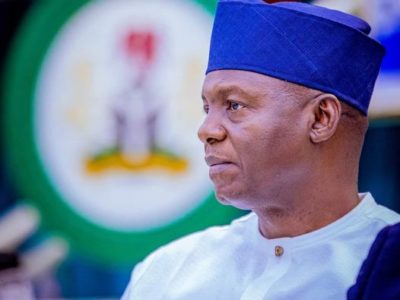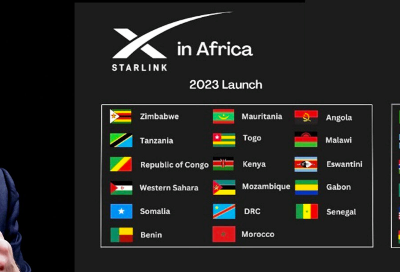Matters eRising with OLUSEGUN ORUAME
The Nigerian Communications Commission (NCC) is reviewing the existing licensing structure in the country’s telecommunications industry. It is a welcome development that is required to explore the challenges and opportunities of an industry perpetually in transition.
While inaugurating a Standing Committee to review the existing structure, the Executive Vice Chairman and Chief Executive Officer of NCC, Prof. Umar Garba Danbatta, said “the need for the review of the existing license structure was informed by the wide range of technological advances, convergence of technologies and services which have characterized the global telecoms space over the years, and which impact is increasingly being experienced in Nigeria.”
“In the Generation 4 era of regulation, issues of wider access and cheaper cost of service are becoming secondary to more critical emerging issues such as how to sustain a level playing field for all players; how to optimize Next Generation Networks (NGNs) to bring best of technology values to increasingly sophisticated consumers.”
The telecoms regulator cannot be faulted. The current license structure is almost 20 years old and should be deemed archaic in an industry where technology and regulation age faster than in any other sector.
When Nigeria embarked on its revolutionary transformation of the telecom sector almost two decades ago by deregulation and liberalization of the telecoms market; and then created an independent telecom regulator to act as umpire, most technologies that still drive the market today were in their first or second generation not the current 5th to 6th generation.

A license regime for mere voice and SMS in 2001 is definitely anachronistic in a 2021 market that has evolved to reflect technology convergence and increasingly being reconfigured by emerging technologies.
The market has dramatically changed. But it would appear regulation, which also subsume the existing licensing structure, has terribly lagged behind.
It is evidently clear, to quote Danbatta, that a there is a need for “urgent review of the existing license pattern to reflect new licensing trends in line with international standards while providing opportunities for improved revenue for government.”
The committee’s job is cut out for it. At the end of its review, it must answer the question of how the NCC can face up to new regulatory and technology challenges as well as expand the frontier of opportunities for new players and revenue for all stakeholders notably, government.
Perhaps, that is what the telecom regulator meant by expressing in the statement released by the commission’s Public Affairs Director, Dr. Ikechukwu Adinde: “the review is part of the telecoms regulator’s responsiveness to global trends and the new dynamics in the ICT ecosystem.”
RELATED
NCC Reviewing Telecoms License Structure To Reflect Tech Dynamics
NCC Finalises Cost-Based Study On International Termination Rate Determination
The key words are responsiveness, new dynamics and the ICT ecosystem. How do regulators respond to trends in technology, seeming unpredictability of the market forces and actors? What are the established regulatory patterns of nearly two decades ago and how have they been rendered moribund by today’s and seemingly unfolding realties in the ICT ecosystem? What next for regulations in the face of ‘Convergence of Convergences’? The debate used to centre on regulatory and technology convergences but there are now debates around industry convergences and just what will be the future of regulation as the fourth industrial revolution (4IR) shapes up and become the destiny of everything industrial? The NCC Standing Committee has an extensive assignment ahead of it.
Obligation-based regulation and a stovepipe ICT marketplace are gone – ITU
In its first ever to be published Global ICT Regulatory Outlook 2017, the International Telecommunication Union (ITU) affirmed that the days of “obligation-based regulation and a stovepipe ICT marketplace” are gone. That era, approximately tagged: ‘Generation 1’ no longer exists. Regulation is at Generation 4 and even some countries are already at Generation 5. Yes! There is a seismic shift that forces regulation and regulators to be ‘open, collaborative, flexible and consensus-based.
The decades when regulators licensed access and ruled supreme over operators can no longer stand. The dynamics of technology, trends in convergence and increasing weighty, sophisticated operations of networks make imperial regulation anachronistic and impracticable. What rules now is smart, inclusive and forward-looking ICT regulation. As the ITU Secretary-General, Houlin Zhao puts it, regulators would do well to adopt the new: “useful guidance in reviewing and upgrading regulatory frameworks for the ICT sector as a basis to widening the digital economy.”
Licensing access is cool, so too is measuring and ensuring quality of service (QoS), but more services are now within the grasps of consumers outside of the direct purview of regulators and riding on the back of legacy services of licensed operators. In Nigeria, as in many telecom jurisdictions, both operators and regulators have opted to simply watch as the market unfolds; even as all parties are faced with the issues of best practices, anti-trust and optimization of a unified approach to regulating a converged industry.
In the Generation 4 era of regulation, issues of wider access and cheaper cost of service are becoming secondary to more critical emerging issues such as how to sustain a level playing field for all players; how to optimize Next Generation Networks (NGNs) to bring best of technology values to increasingly sophisticated consumers; and to ensure adherence to corporate codes on best practices; among others.
The contentions among stakeholders today are both regulatory and technology – they all collapsed to one central theme of how to meet the challenges of technology and regulatory convergence. From a technology perspective, it is a simple matter of deploying new technologies to expand service tremendously and cheaply by erasing old business models. The potential is great and the benefits inherently enormous.
But from regulatory perspectives, there are risks. Disruptive technologies will bring welcome changes but they could disrupt the market so much so that governments, regulators, and existing operators could lose grip of the market and the consequences will be a lawless market space without effective or even, total lack of control. Control in the sense of guided direction and absolutely necessary enforcement.
“Regulators would do well to adopt the new: “useful guidance in reviewing and upgrading regulatory frameworks for the ICT sector as a basis to widening the digital economy” – ITU Secretary-General, Houlin Zhao
The notion of convergence, as some advocates will push it, raises the ageless philosophic debate over whether laws or absence of laws are necessary to advance real development in any society?
Laws and enforcements are germane to growth. The last decade defined access. The unfolding decade will define the multiplicity of possibilities and challenges that have happened to access. Right Regulation will become imperative to sustain order and real growth. The Standing Committee of should take a cue from the Global ICT Regulatory Outlook 2017 as it is evidently clear that the regulator is attuned to aligning with what works now and is likely to work in the foreseeable future: ‘smart, inclusive and forward-looking ICT regulation.’






























